Are you looking for new plants for your container garden? Do you enjoy indoor houseplants with tons of color? If so, there is a wide array of beautiful succulents that brighten any space. Some offer a splash of bright color. Others change depending on the season.
No matter what season, caring for the plants is a breeze. Succulents are the most recommended type of indoor plant for beginners. They stay alive for years with barely any maintenance.
Succulents require little water, so anyone can keep them looking attractive. Even if you forget to water succulents, the plants go on living. All you need is the bright sun to produce vivid colors. Here is a collection of gorgeous shades of succulents. They differ slightly, as there are many colors, shapes, and sizes. Look for the right option for your house.
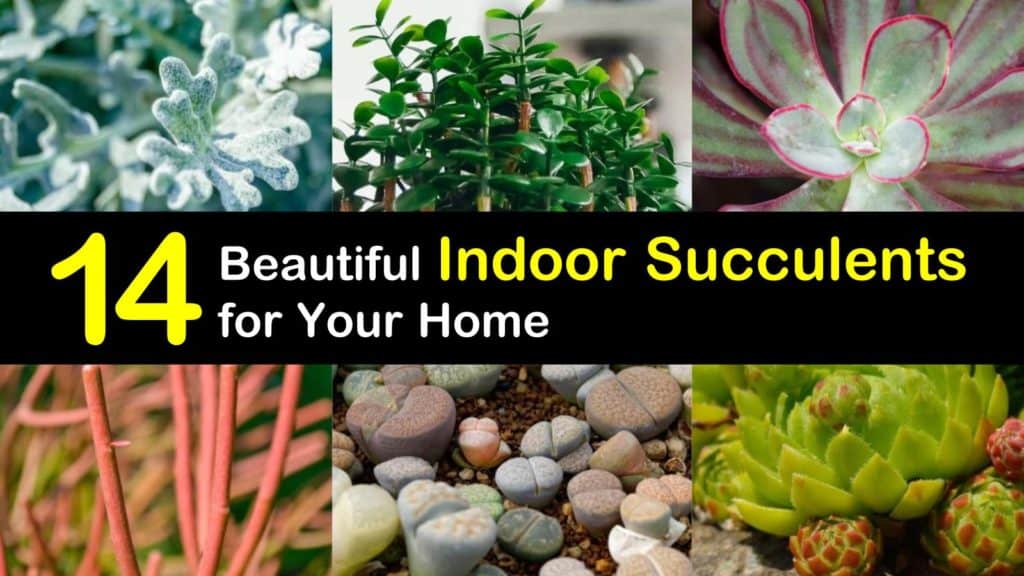
- How to Grow Succulent Plants Indoors
- Planting Beautiful Succulents
- Aloe Vera (Aloe)
- Living Stone (Lithops) – Unique and Colorful
- Sunset Jade (Crassula ovata ‘Hummel’s Sunset’)
- Lavender Scallops (Bryophyllum fedtschenkoi) – An Upright Stonecrop
- Blue Glow “Agave” (Agave attenuata x Agave ocahui)
- Miniature Jade Plant (Crassula ovata ‘Minima’) – A Popular Indoor Succulent
- Zebra Plant (Hawthoria fasciata)
- Houseleek (Sempervivum tectorum) – The Most Common Succulent
- Copper Pinwheel (Aeonium ‘Sunburst’)
- Sticks on Fire (Euphorbia tirucalli) – A Beautiful Succulent for Indoors
- Dragon’s Blood Stonecrop (Phedimus spurius)
- Coppertone Stonecrop (Sedum nussbaumerianum) – Hardy Stonecrop
- Red Edge Echeveria (Echeveria subrigida)
- Wooly Senecio (Senecio haworthii) – A Rare and Beautiful Succulent
How to Grow Succulent Plants Indoors
There are many types of succulents for planting both indoors and out. The most beautiful succulents depend on your preferences. However, caring for most of them is easy.
Planting Beautiful Succulents
Make a DIY terrarium to house your favorites or group your favorite succulents outside in a rock garden. Succulents also pair together to make a beautiful container garden or line the windowsill with individual pots.
The right type of potting depends on the plant, however. Most thrive in ceramic or terracotta containers, which offer the right amount of heat and drainage. Succulents hate wet soil as well. Make sure the container you select provides proper drainage.
Too much water causes the plants to contract diseases, rot, and even die. Most succulents are propagated by replanting a cutting from one of the leaves. Others reproduce on their own without any help. Plant some exotic varieties from seed for the best results.
If you find aphids on succulents that you grow indoors or out, treat the plants quickly to avoid an infestation that can harm the plants. Wipe the leaves with a gloved hand or use neem oil to eliminate the problem.
Aloe Vera (Aloe)
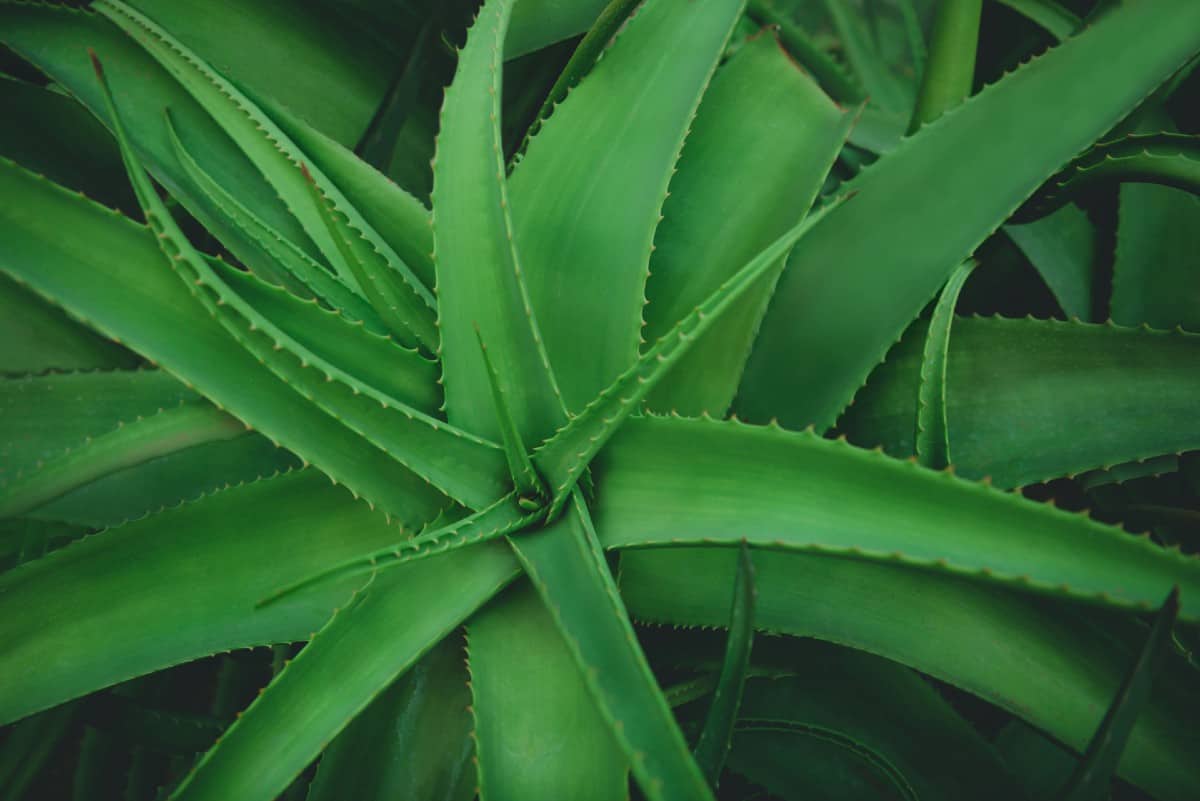
Aloe vera is an attractive succulent perfect for indoors. The hard to kill house plants offer a juice that you apply topically to heal painful scrapes and sunburns. Each leaf is thick, green, fleshy, and serrated. The plant is stemless or has a tiny stem.
Indoor aloe vera types are best in bright, indirect light. Direct light may cause the leaves to overdry and turn yellow. Plant aloe in a terracotta planter.
Place the porous pot near a sunny kitchen window where it’s accessible when unpleasant symptoms appear. However, never ingest aloe or use it in large quantities.

Living Stone (Lithops) – Unique and Colorful
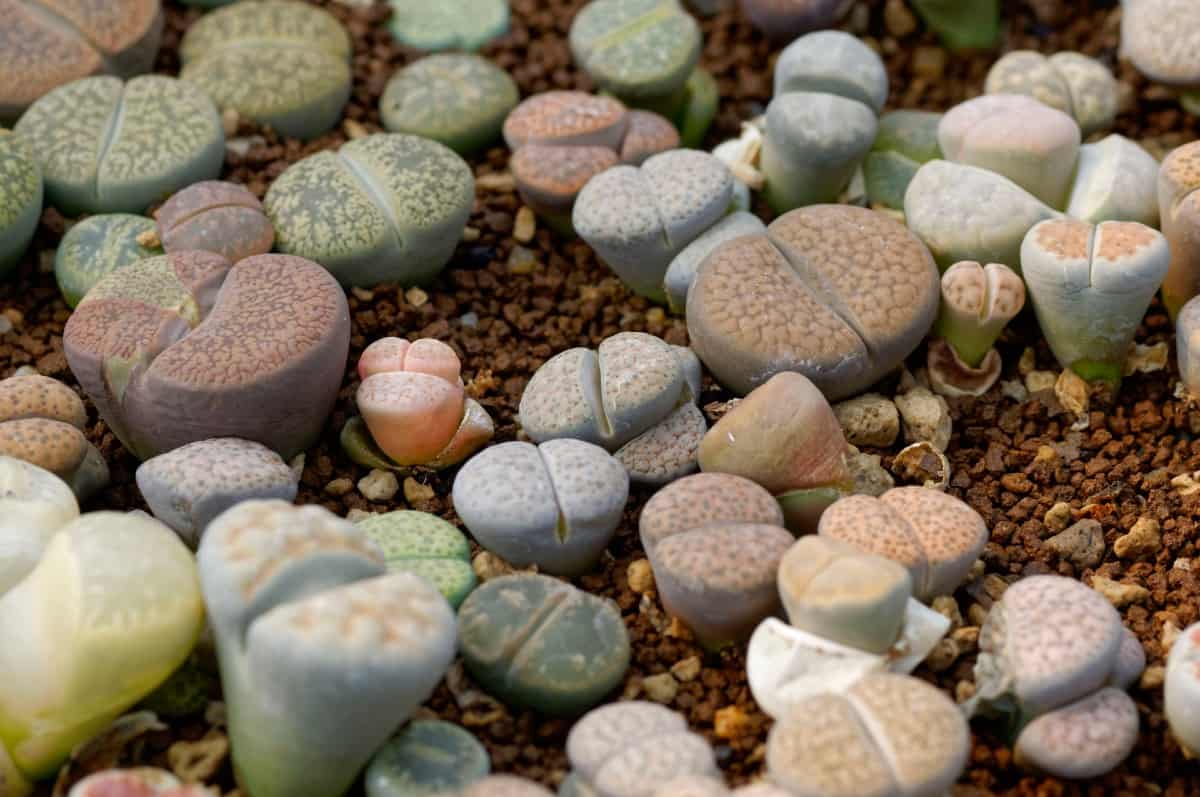
Living stone, sometimes called the pebble plant, is a stemless succulent. The leaves fuse, making the plant resemble grey or beige marble with splashes of color. Sometimes the speckles are green, lilac, yellow, or blue.
Giant flowers emerge from the fissures between the leaves or “rocks.” Either yellow flowers or white flowers are common. Lithops is an indoor houseplant in all planting zones, although the plant originated from South Africa in the Namibian desert.
Growing a living stone is easy. Once the plant adapts to your conditions, they store water in their leaves and take care of themselves.
Sunset Jade (Crassula ovata ‘Hummel’s Sunset’)

A popular type of Crassula, the Sunset Jade tree turns golden yellow with deep red margins in a full sun location. The branches are thick and woody, similar to a natural bonsai tree. It’s also sometimes called the Hummel’s Sunset or the golden jade plant.
Like many other beautiful succulents, this plant is a superstar grower. Keep it in a pot like a bonsai tree that is one of the best air purifying indoor plants, or grow it outside as a mounding shrub in zones nine or warmer.
The glossy, egg-shaped leaves of the Sunset Jade enjoy full sun, but beginners find that they are indoor plants that grow in low light, too.
Lavender Scallops (Bryophyllum fedtschenkoi) – An Upright Stonecrop
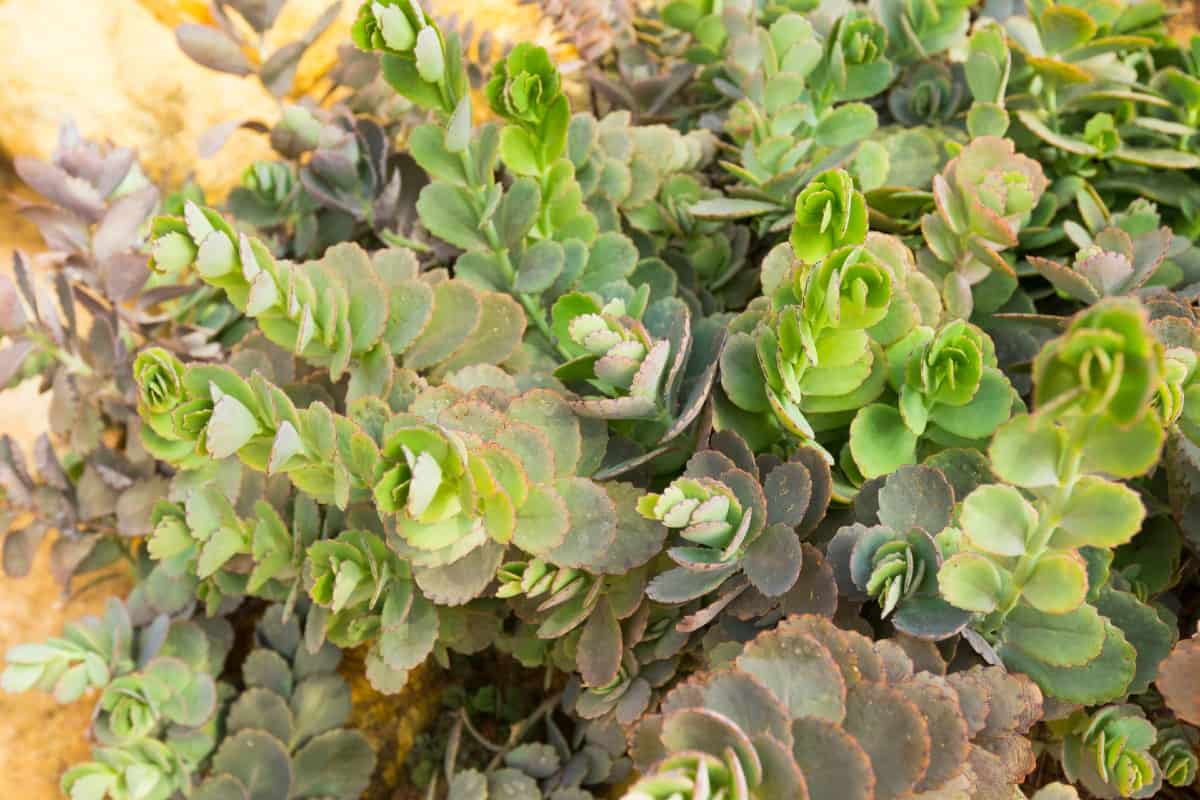
Also called kalanchoe stonecrop, Lavender scallops are a perennial succulent that grows upright. They come with long-lasting lavender and pink flowers and blue-green leaves.
There are non-flowering varieties available, so make sure to select the right type if you’re looking for an indoor houseplant. An excellent plant for the desert, Lavender scallops are hardy.
Propagating lavender scallops is super simple because the stems root immediately when they touch the soil. Try sticking a few leaves in a medium-sized pot. Most other succulents take at least a few weeks to anchor themselves.
Blue Glow “Agave” (Agave attenuata x Agave ocahui)
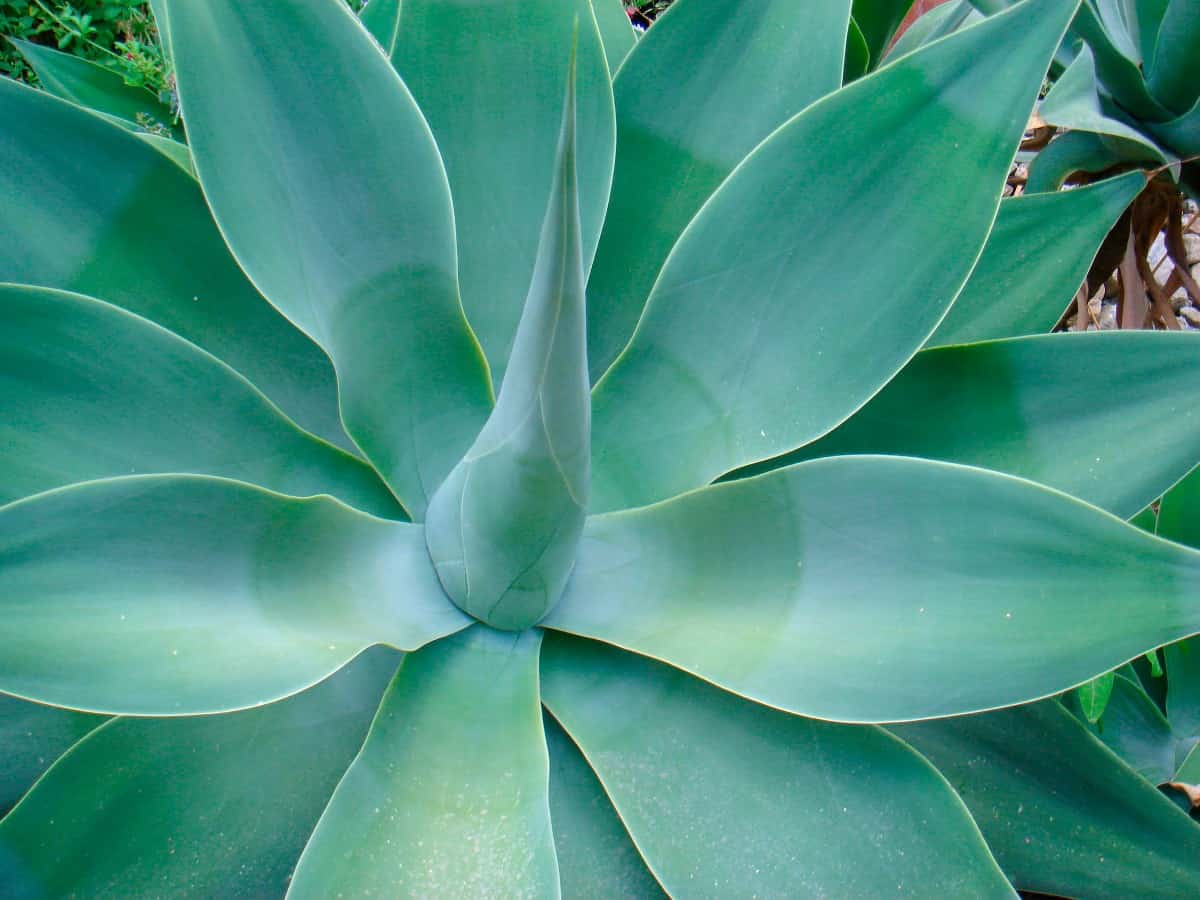
This beautiful succulent is a mix between the Agave attenuata and the Agave ocahui, two popular evergreen types. The leaves have a stunning blue-green color with red, orange, and yellow rims.
Blue Glow Agave is a stunning focal point in any garden, particularly when paired with decorative containers. Expect this plant to grow to about two-feet-tall and about just as wide.
It doesn’t handle cold temperatures under 20°F, making blue glow an excellent indoor houseplant. After ten years, the plant produces beautiful cactus flowers and then dies. There are no offsets to replant.
Miniature Jade Plant (Crassula ovata ‘Minima’) – A Popular Indoor Succulent
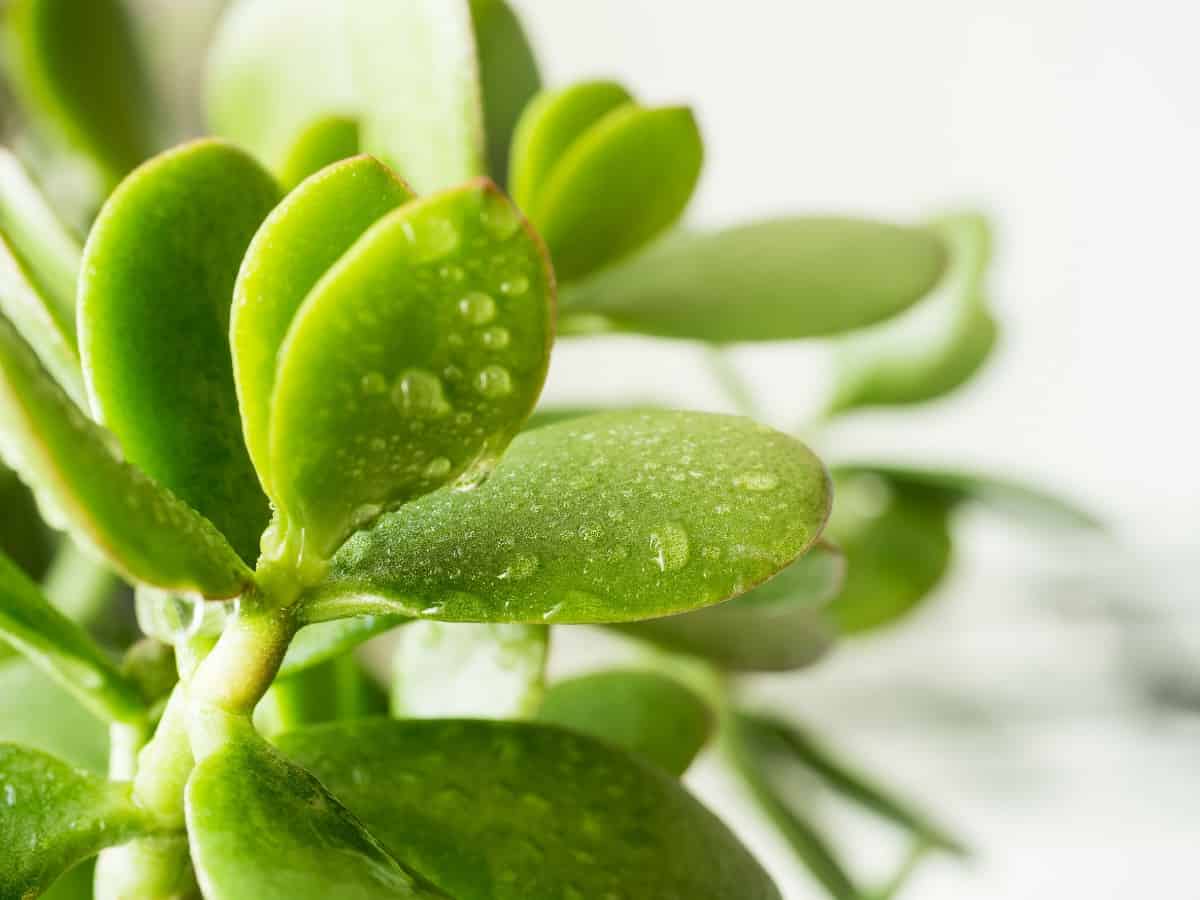
Jade plants are among the most popular types of succulents. They’re common houseplants because they’re easy to grow and relatively resilient. The oval-shaped leaves grow and look like a miniature tree.
With warm, dry conditions, expect the jade plant to live a long life. Some people pass down their jade plants through many generations when it can reach three feet.
The only thing to worry about with growing jade is water. The soil must thoroughly dry between watering, or it may start to rot. A sturdy container is also ideal, as the plants grow top-heavy.
Zebra Plant (Hawthoria fasciata)

Sometimes called the zebra cactus, pearl plant, star window plant, or the cushion aloe, the zebra plant is a popular succulent. This plant is well-known for its white stripes, like those of a zebra. The succulent is pocket-sized, with deep green leaves.
The rosettes make excellent centerpieces in succulent gardens or alone as an attractive houseplant. Easy to grow, the succulent needs bright light and plenty of moisture in the summer.
Never overwater the plants or allow them to dry out. The best way to care for a zebra plant is with relatively constant conditions that only get slightly drier over the winter.
Houseleek (Sempervivum tectorum) – The Most Common Succulent

Houseleeks, commonly called hens-and-chicks, offer gorgeous green rosette leaves. The tips are purple in this species, but others offer varying shades of red on green foliage.
There are many Sempervivum varieties, many of which might go by the name of houseleek. Many people use the leaves to create medicine for issues like severe diarrhea or skin troubles.
Hens-and-chicks seem to last forever because they reproduce “chicks” or little plants. Grow them in full sun with well-draining soil. Water the succulents sparingly.
Never allow the temperature to drop below 65°F or above 75°F, or the plant will go dormant and stop growing.
Copper Pinwheel (Aeonium ‘Sunburst’)

The copper pinwheel is also called sunburst. This variegated type of Aeonium is a branching succulent, so the stalks grow up to 18 inches tall. The leaves are in a rosette pattern with yellow, green, and white colors.
The stalks display the copper-red color where the plant receives its name. In full sun or bright shady area, the delicate leaves appear almost pink.
Grow copper pinwheels indoors. They’re not cold hardy, and they burn easily in direct sunlight. The best location for this plant is away from the window, particularly anywhere with hot mid-day or morning sun. A ceramic pot is ideal.
Sticks on Fire (Euphorbia tirucalli) – A Beautiful Succulent for Indoors
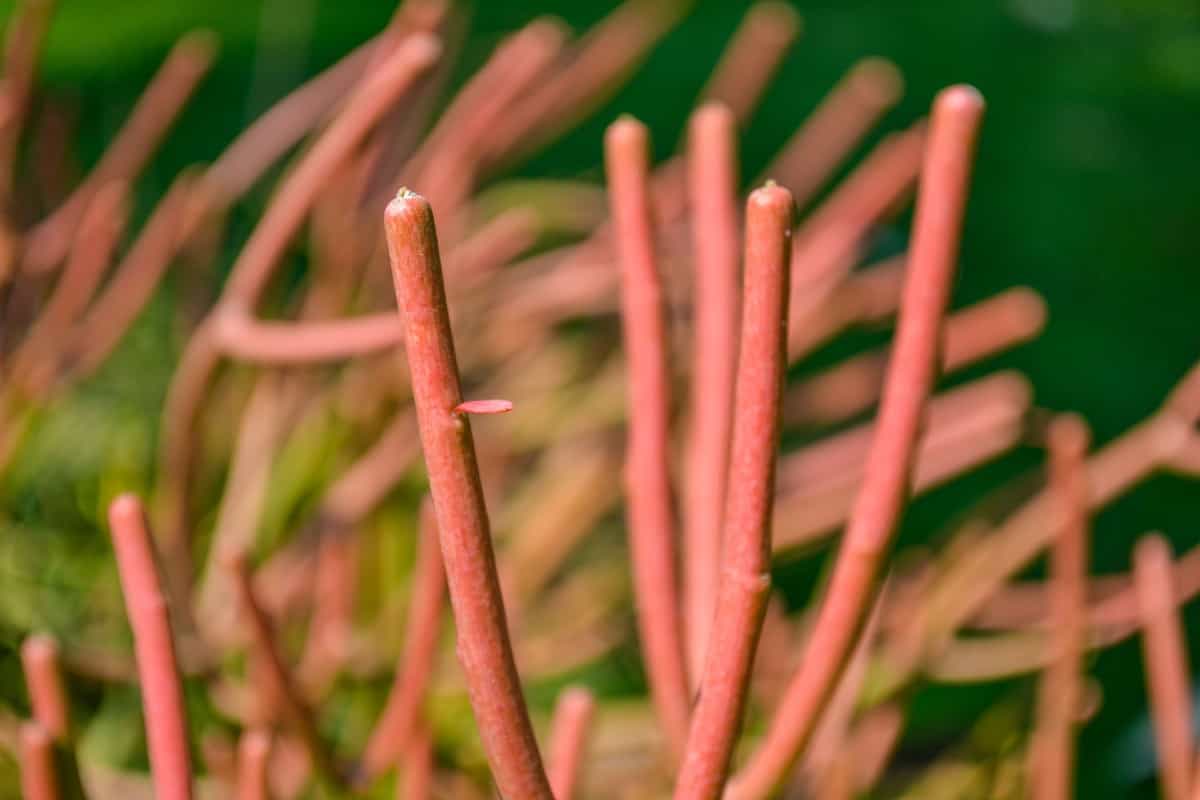
Also called the “pencil cactus,” naked lady, milk bush, Indian tree spurge, or aveloz, sticks on fire is a stunning and unique succulent. The houseplant is both beautiful and dangerous. Like all members of the Euphorbia family, it’s highly toxic.
For safety, keep the pot suspended out of reach of children and pets. Sticks on fire are great plants for indoor hanging baskets or a container lifted from the ground to keep them away from curious fingers and snouts.
In a full to part sun location, sticks on fire turns bright orange-red with touches of yellow. Water the plant less often for the best color results. In tropical, semi-arid areas, the plant even grows into a tree.
Dragon’s Blood Stonecrop (Phedimus spurius)

Dragon’s blood is a type of cold-tolerant, creeping stonecrop with two rows. It’s commonly grown as groundcover outside or inside in hanging baskets, like other types of sedum.
People love watching this succulent change color. In the late summer, the leaves change to a bronze-red shade, then to bright red for the fall months.
Plant dragon’s blood cuttings in a well-draining pot with compost and sand or scatter the seeds in a rock garden. Regularly mist the leaves with water after the roots develop. Prune the sedum back once in a while to prevent overgrowth.
Coppertone Stonecrop (Sedum nussbaumerianum) – Hardy Stonecrop
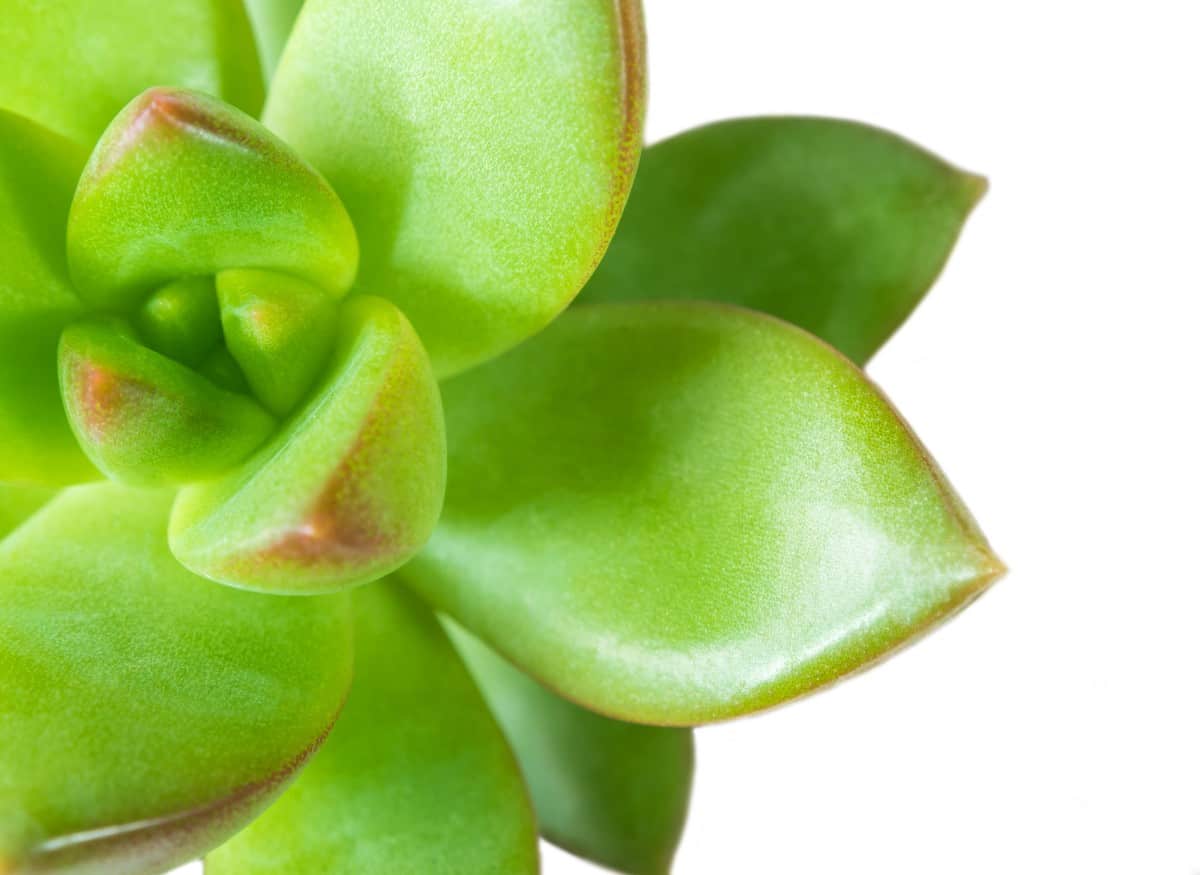
Like other sedums, this plant is hardy. It thrives on drought, heat, and neglect after the plant is fully grown. However, coppertone stonecrop is unique. Bright sunlight allows the leaves to turn to an eye-catching copper-gold. In the shade, the plant appears more yellowish-green.
While most stonecrops make an excellent groundcover because they are cold tolerant, coppertone is better for the summer. The plants come in varying sizes from a couple of inches tall to knee height. They’re versatile enough for indoors and out.
Red Edge Echeveria (Echeveria subrigida)
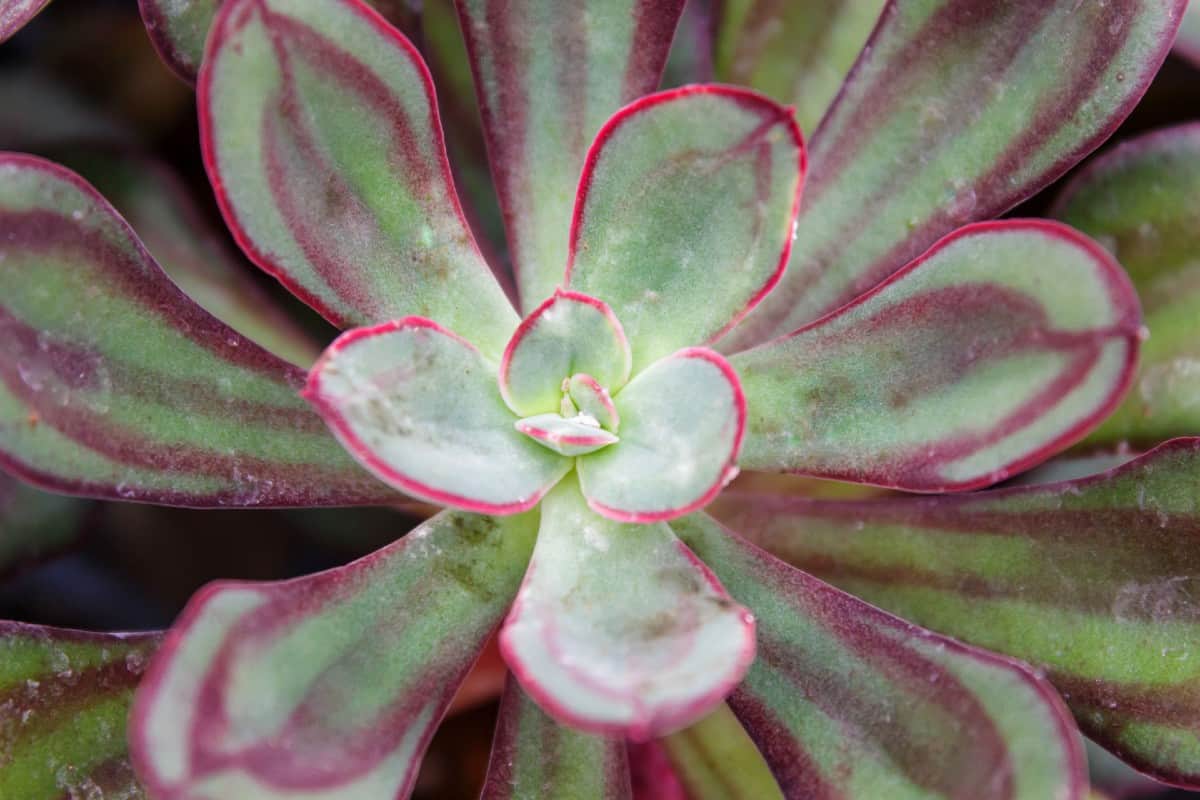
Sometimes called “fire and ice,” this type of Echeveria is offers a bright red color at the tips of each leaf and a pale green center. The rosette shape reaches about two inches in diameter. It is common in the Zacatecas mountains in Mexico.
This succulent requires at least six hours of direct sunlight every day to produce the stunning color range. It never stops blooming. Place this plant as a focal point in a succulent garden with small containers for a stunning arrangement.
Wooly Senecio (Senecio haworthii) – A Rare and Beautiful Succulent

The only white succulent on this list is the wooly Senecio, sometimes called a cocoon plant. It’s unique, small, and hard to find due to the distinctive snow-white leaves. If you find this houseplant, never let it go.
The wooly Senecio grows as a dwarf shrub perennial with high altitudes and hot temperatures. It reaches 12-inches-tall. Plant them in an open-air, full-sun location.
The soil should remain dry most of the time, as wet soil causes rot. Wooly Senecio is even cold hardy, so you don’t need to move your containers indoors until the temperature drops below 22°F.
Colorful succulents are the best way to bring new life to dull spaces. They’re the perfect indoor houseplant for beginners because they’re incredibly hardy, and the plants tend to do well in containers on the windowsill.
Many of the pink or purple shades may require more water to keep their bright color. Otherwise, they handle neglect surprisingly well.

Which plant will you add to your home? If you liked our list of beautiful succulents, please share these stunning houseplants with your friends on Pinterest and Facebook.